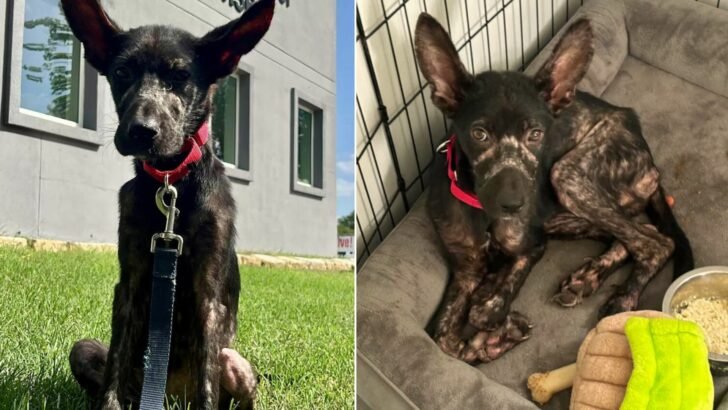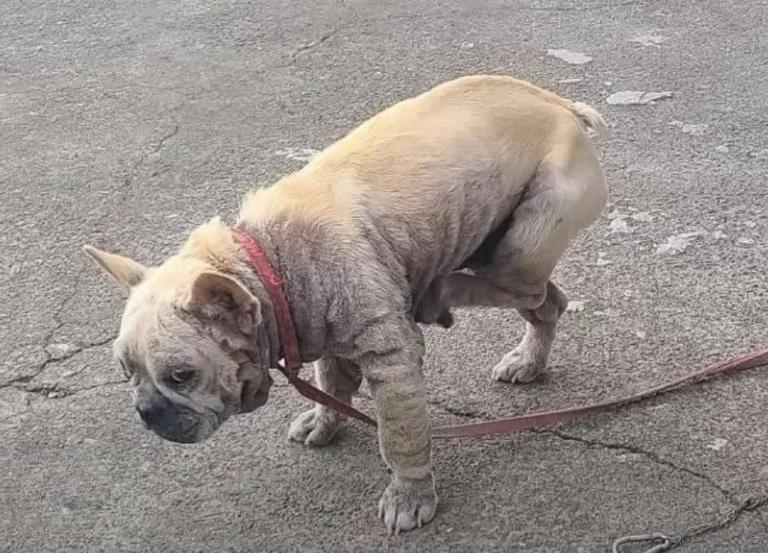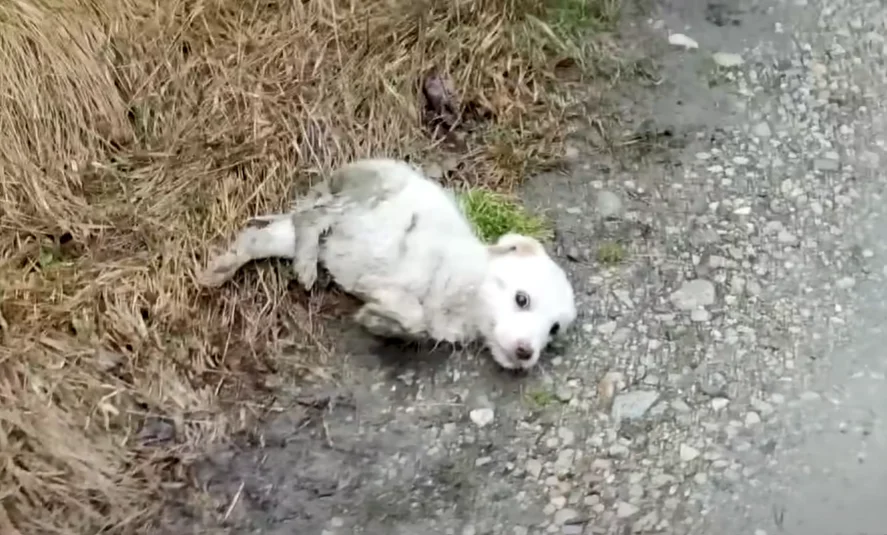Dogs and children can form wonderful bonds, but this largely depends on the dog’s temperament and training. Some dogs naturally enjoy the company of children and are well-adjusted around them, though they still require proper training and boundaries. On the other hand, not all dogs are comfortable with kids, and some may even be fearful or anxious around them. While many of these dogs can learn to coexist safely with children, others may never be entirely at ease in such interactions.
If you have children in your home, it’s crucial to ensure their safety around your dog.
01 of 10: Socialize Your Puppy
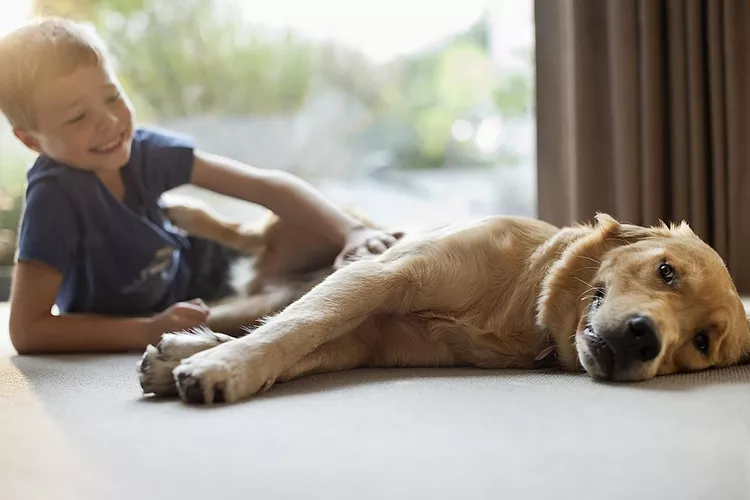
Puppies are highly impressionable between 8 and 16 weeks of age. During this critical development period, introducing them to various people and situations, including children, can help them become well-adjusted and comfortable. Ensure that these interactions are positive and that children are gentle and respectful. For adult dogs, socialization can still be beneficial but should be approached more gradually. Use plenty of treats and praise, and remove your dog from stressful situations if needed.
02 of 10: Start an Obedience Program

Teaching your dog basic commands like “sit” and “down” is fundamental to ensuring it behaves appropriately around children. A well-behaved dog is less likely to cause accidents or discomfort. Enrolling in training classes can be helpful, offering both professional guidance and socialization with other dogs.
03 of 10: Practice Handling Exercises
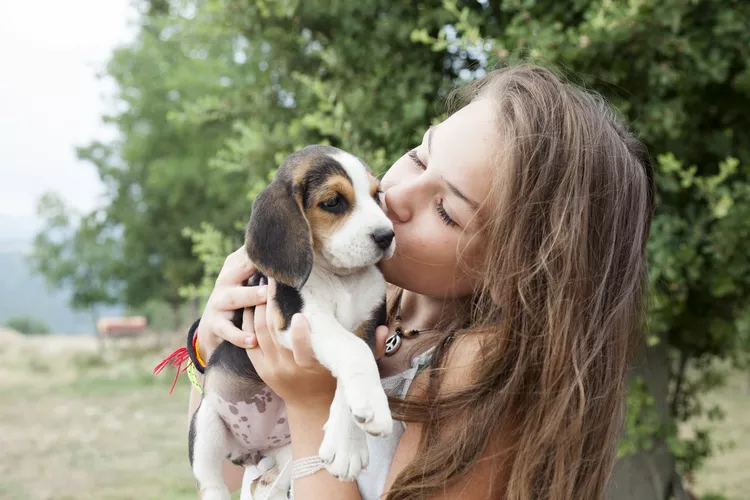
Prepare your dog for the kinds of interactions it might have with children by gently handling its tail, paws, and ears. If your dog shows signs of fear or discomfort, it may need more time and careful introduction to children.
04 of 10: Don’t Allow Your Dog to Jump Up
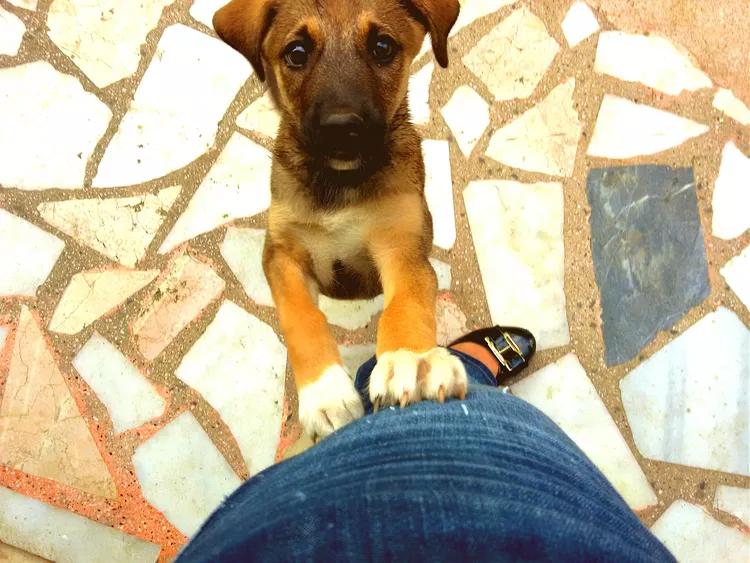
Jumping can be particularly hazardous with young children who might be knocked over. Train your dog to greet people politely by asking it to sit rather than jump. Reward it for keeping all four paws on the ground to reinforce the behavior.
05 of 10: Introduce Dogs to Children’s Toys
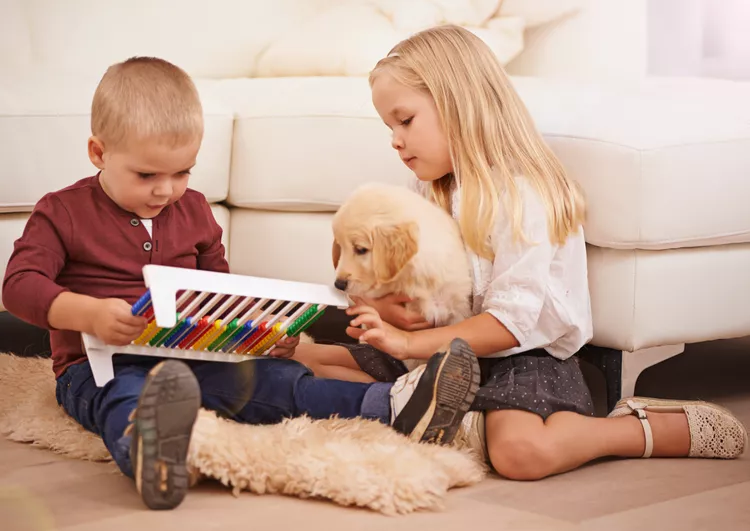
Children’s toys can be enticing and unpredictable, which might lead to your dog either destroying them or getting startled. Introduce your dog to these toys calmly and use commands like “leave it” to manage its interest. Redirect your dog to appropriate toys and reward it for calm behavior around children’s toys.
06 of 10: Act Like a Kid
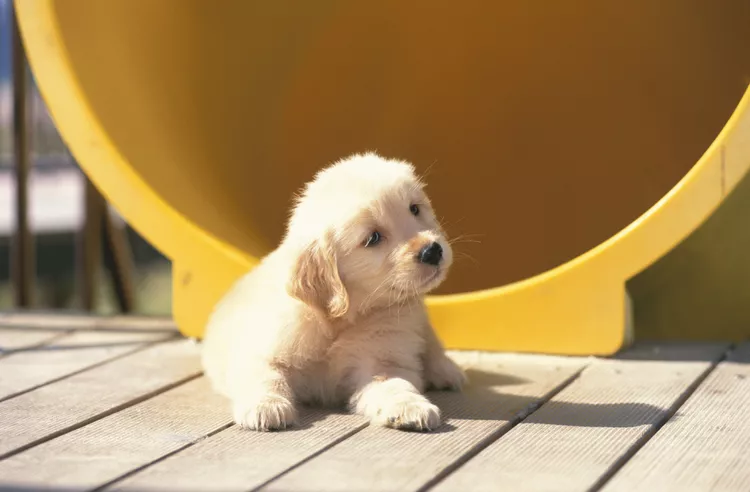
Children often move and behave in ways that dogs are not used to. Simulate these behaviors yourself, such as running around or making loud noises, to help your dog adjust. Gradually expose your dog to children’s play in a controlled manner, using positive reinforcement to build confidence.
07 of 10: Crate Train Your Dog
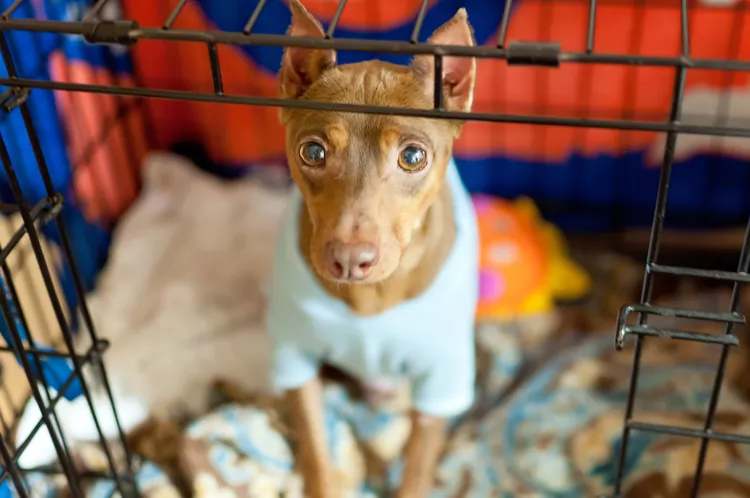
A crate provides a safe retreat for your dog when it needs a break from interactions with children. Ensure children understand that the crate is a no-go zone for them, allowing the dog to have a secure space where it can relax.
08 of 10: Don’t Force a Dog to Accept Children
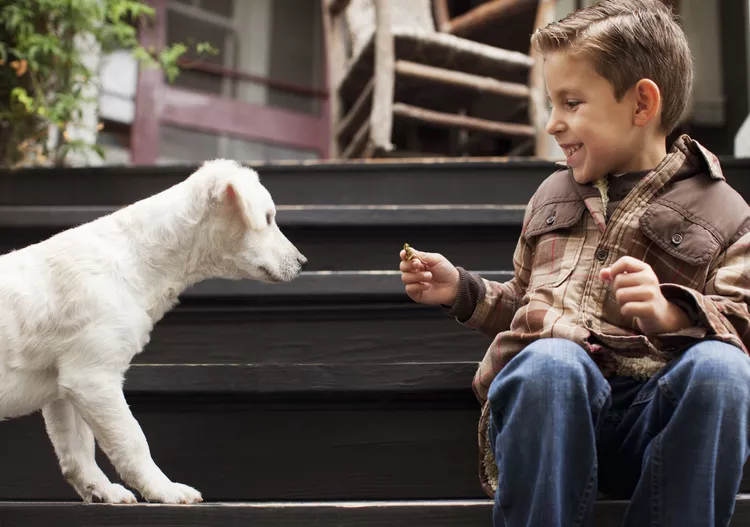
Forcing a fearful dog to interact with children can lead to stress and aggression. Allow your dog to approach children at its own pace and avoid situations where the dog might feel trapped or threatened.
09 of 10: Keep It Positive
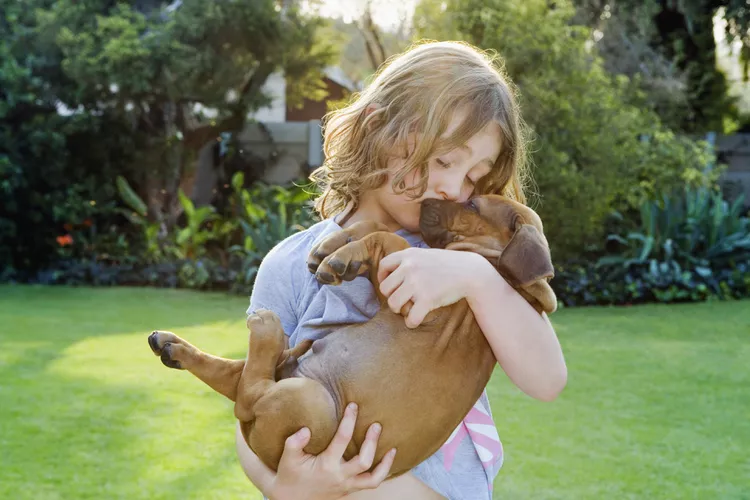
Use positive reinforcement to encourage your dog’s good behavior around children. Praise, treats, and affection will help your dog associate children with positive experiences and foster a harmonious relationship.
10 of 10: Give Children Rules
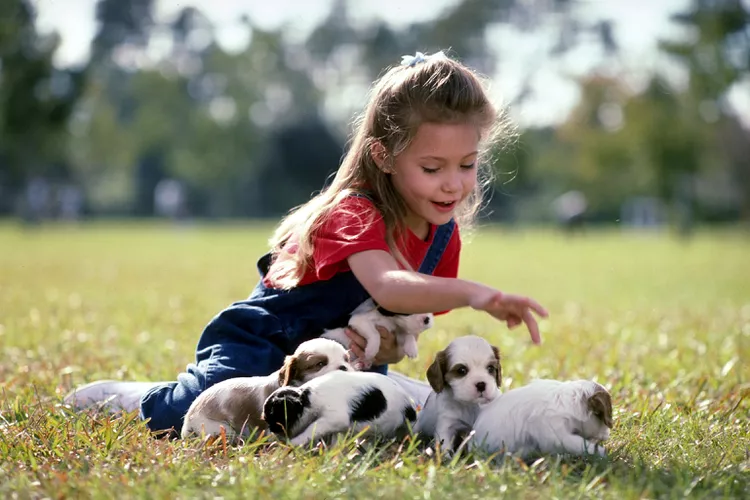
Children also need guidance on how to interact with dogs safely. They should know to:
- Pet the dog gently.
- Avoid forcing attention on the dog.
- Stay away from the dog’s crate.
- Leave the dog alone while it’s eating or chewing a toy.
- Respect the dog’s space when it is sleeping. Always supervise interactions between children and dogs to ensure safety.



